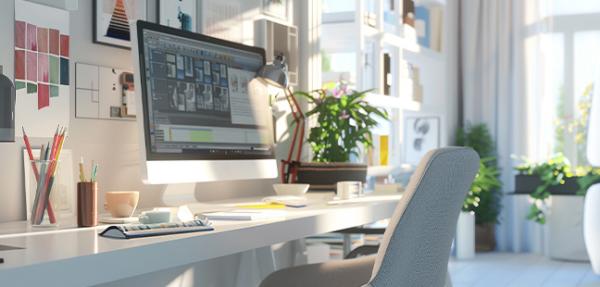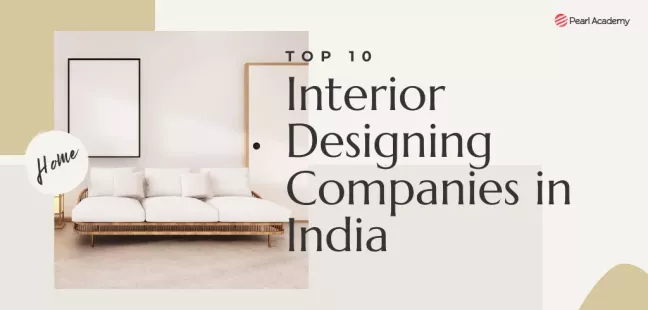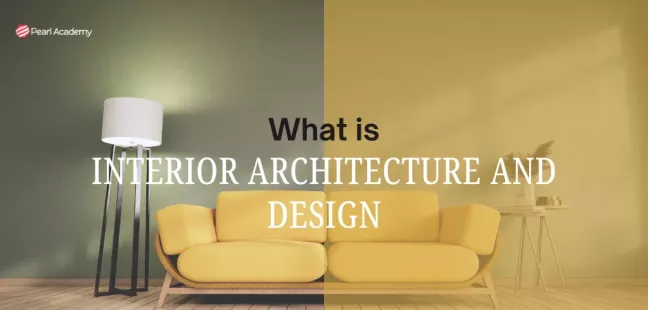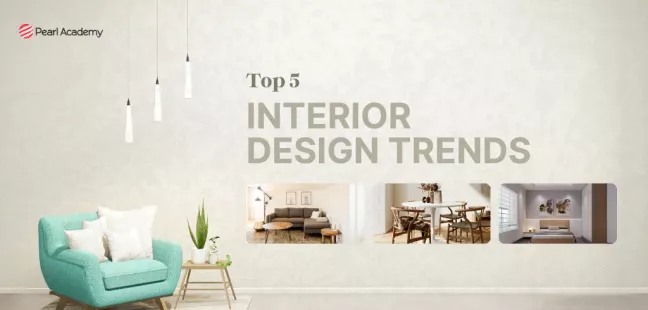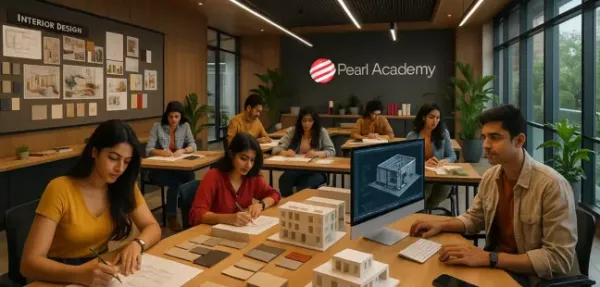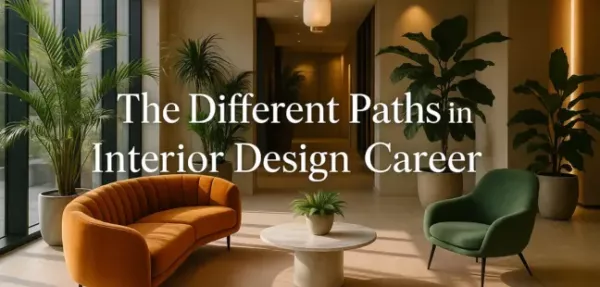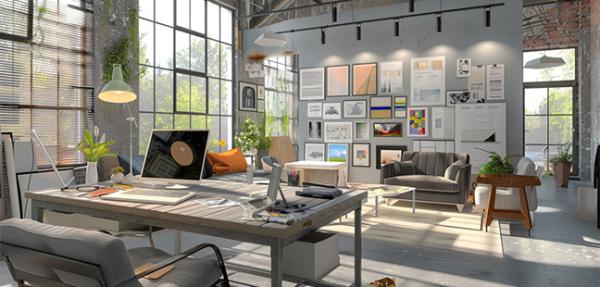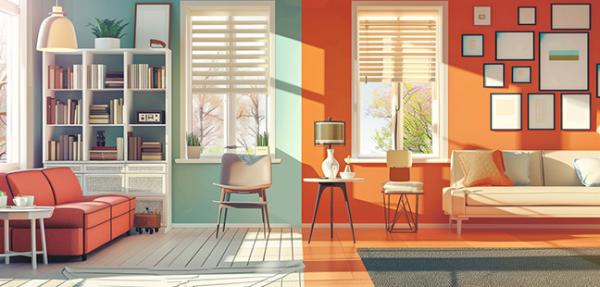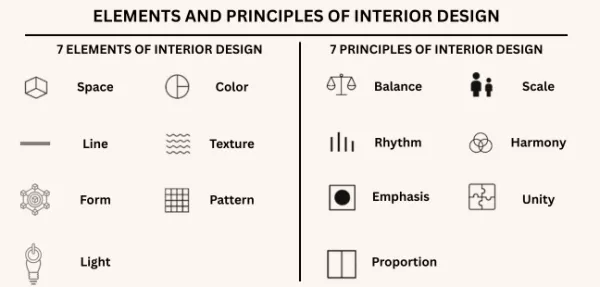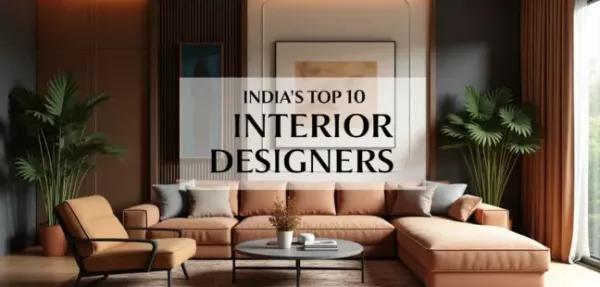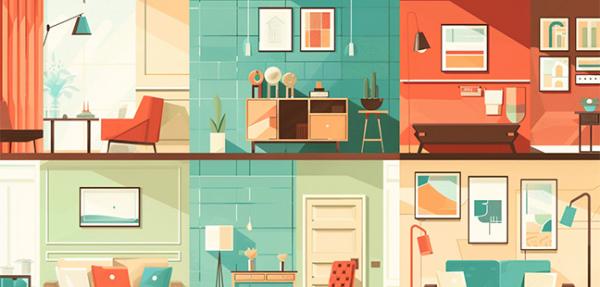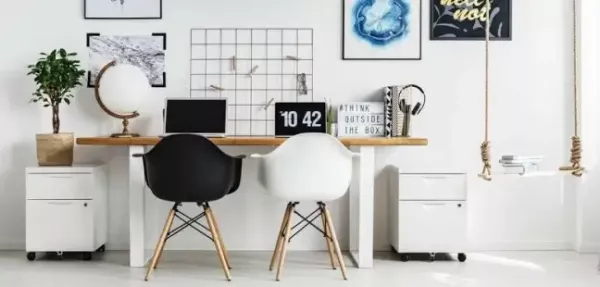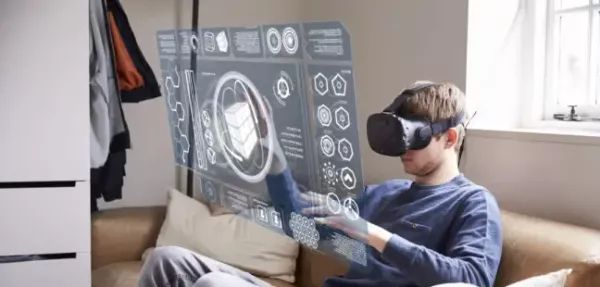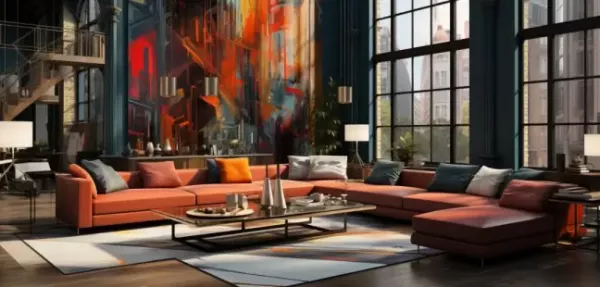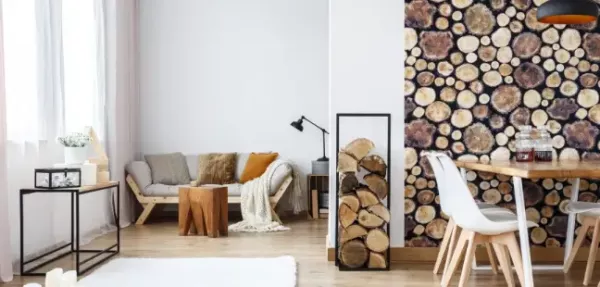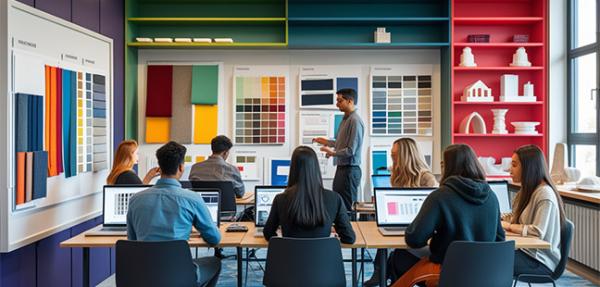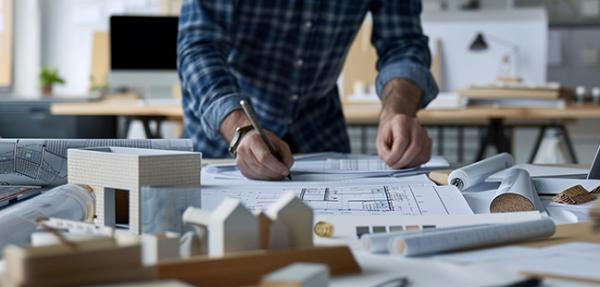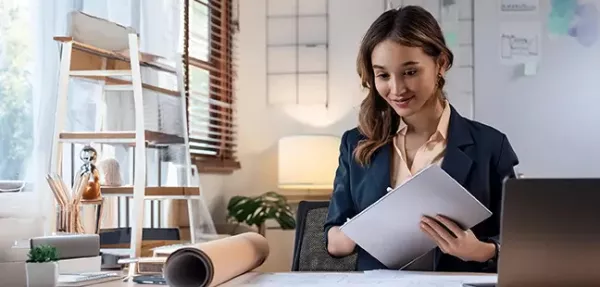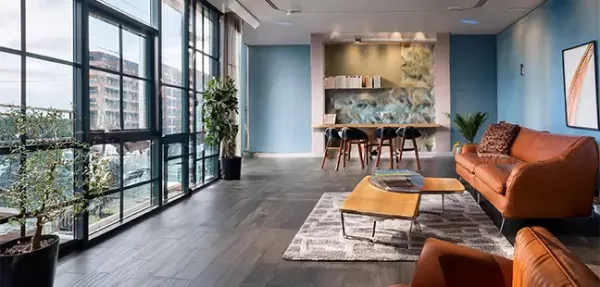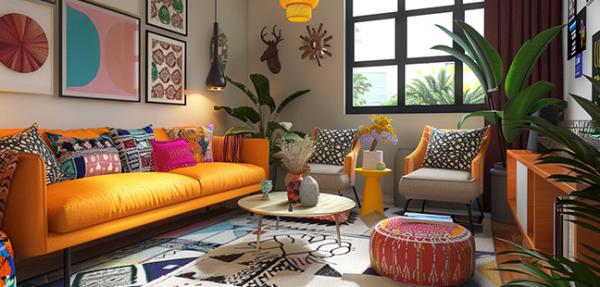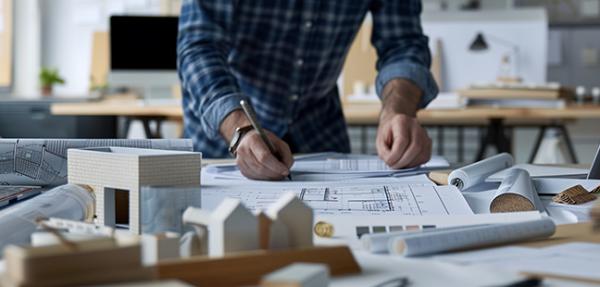Neuroaesthetics in Interior Spaces: Designing for Mental Well-Being and Productivity
- Editorial Team
- Published 09-Nov-2025
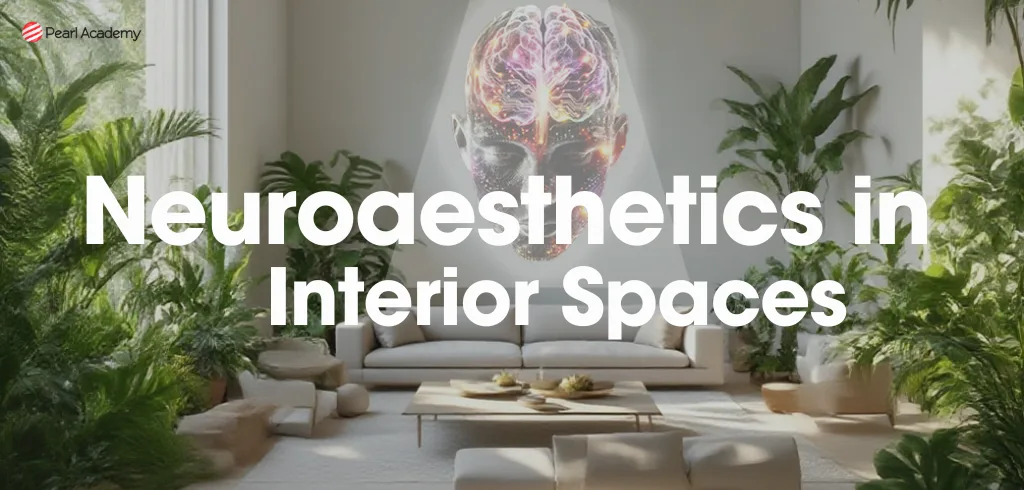
Have you ever experienced your heart skipping a beat on walking into a beautiful palace or cathedral? It is because your brain is filled with awe on experiencing the space. In contemporary times, design has become more than what meets the eye. It now also encapsulates what appeases the brain and human psychology as well. Neuroaesthetics-the study of how brain views and responds to aesthetical experiences has helped architects and interior designers to design spaces that improve psychological health and performance. Scientifically it’s been proved that when senses are engaged in balanced and meaningful ways by interior spaces, the inhabitants become calmer, more focussed, and creative.
Become future-ready with our Interiors Programs
Know MoreThe Brain, Beauty, and Built Environments
In the study of neuroaesthetics, it has been evidenced that aesthetically pleasing spaces trigger the same response in human brains as music, art, or social connection does. Pleasing environments directly impact positively the orbitofrontal cortex, the region linked with emotional regulation and decision-making, as shown by functional imaging studies (Chatterjee & Vartanian, 2014, p. 378). Thus, by designing interiors that please the eye, the quotient of stress hormones can be greatly reduced in humans and foster positive affect.
Colour and lighting also have a big impact on human brain, mood, and behaviour. While cool hues like blue and green lower blood pressure and promote relaxation, warmer tones stimulate alertness (Küller et al., 2006, p. 101). Circadian rhythms and serotonin production are regulated by natural daylight, supporting both mental health and productivity (Boubekri et al., 2014, p. 70). Therefore, the colour palettes we choose and the illumination we have are essentially an intervention in neurobiology, and not merely a stylistic decision.
Spatial Harmony and Sensory Balance
Spatial configuration also plays a critical role. Spaces that are too cluttered, or too sterile, or even too complicated negatively impact attention and cognitive engagement (Vartanian et al., 2013, p. 81). Studies in the Journal of Environmental Psychology demonstrate that people report higher satisfaction in rooms with balanced proportions, rhythmic symmetry, and visible natural materials (Joye & van den Berg, 2008, p. 301). People tend to feel more comfortable and welcomed around wood or woven fabrics, as these textures stimulate the somatosensory cortex and produce feelings of belongingness. Studies using fMRI and EEG have also found out that curvilinear spaces activate the areas of brain related to pleasure and comfort, making the people calmer (Kellert & Calabrese, 2015).
Use of biophilic design that evoke nature further enhances mental restoration. Visual access to greenery, indoor plants, or even images of natural scenes lower anxiety and improves working memory (Kaplan & Kaplan, 1989, p. 187). The presence of organic forms and materials reminds the brain of evolutionary safe havens, generating an unconscious sense of refuge.
Designing for Well-Being and Productivity
When the above stated human brain responses to various neuroaesthetic principles are taken into consideration while designing interior spaces, a visible improvement in well-being and task performance is measured. In the findings of the scholar Heerwagen, it’s been analysed that employees in biophilic offices reported 15 percent higher productivity and lower fatigue (Heerwagen, 2000, p. 12). Similarly, learning spaces with dynamic daylighting and warm wooden finishes enhanced student concentration and emotional stability (Barrett et al., 2015, p. 678). Also, the patients healed faster when they had access to daylight and a beautiful garden view (Ulrich, 1984; Jiang, 2022).
These findings suggest the importance of thoughtful interior design and how it is essentially a form of preventive mental healthcare. Spaces that harmonize light, color, proportion, and nature can calm the nervous system, enhance focus, and restore depleted attention. In recent times of post-Covid era, when people are spending considerable large amount of time indoors, such environments are vital for collective resilience.

Student Guidance Center: Our Counselors are Just a Click Away.
Conclusion
Bridging the gap between art and neuroscience, neuroaesthetics provides the window into the world of how beauty shapes spaces behaviour. Designers can uncover how and what kind of response spatial stimuli elicit from the human brains. This in turn can help them craft interiors and spaces keeping mental health as a priority. Thoughtful, evidence-based design choices transform buildings into allies of human flourishing, aligning aesthetics with empathy and science.
References:
Barrett, P., et al. (2015). Clever classrooms: Summary report of the HEAD project. Building and Environment, 92, 673–689.
Boubekri, M., et al. (2014). Impact of windows and daylight exposure on overall health and sleep quality of office workers. Journal of Clinical Sleep Medicine, 10(6), 603–609.
Chatterjee, A., & Vartanian, O. (2014). Neuroaesthetics. Trends in Cognitive Sciences, 18(7), 377–385.
Heerwagen, J. H. (2000). Green buildings, organizational success, and occupant productivity. Building Research & Information, 28(5–6), 353–367.
Jiang, S. (2022). Nature through a hospital window: The therapeutic benefits of landscape in architectural design. Routledge.
Joye, Y., & van den Berg, A. E. (2008). Is love for green in our genes? A critical analysis of evolutionary assumptions in restorative environments research. Urban Forestry & Urban Greening, 7(4), 289–300.
Kaplan, R., & Kaplan, S. (1989). The experience of nature: A psychological perspective. Cambridge University Press.
Kellert, S. R., & Calabrese, E. F. (2015). The practice of biophilic design. Biophilic Design, 1–24.
Küller, R., et al. (2006). The impact of light and colour on psychological mood. Ergonomics, 49(14), 1486–1498.
Ulrich, R. S. (1984). View through a window may influence recovery from surgery. Scientific American, 249(5), 66–67. (Article titled “Nature That Nurtures” in Scientific American.)
Vartanian, O., et al. (2013). Impact of contour on aesthetic judgments and approach–avoidance decisions in architecture. Proceedings of the National Academy of Sciences, 110(2), 10446–10453.
Tags
- #Interiors
Pearl Admission Enquiry
Subscribe to Pearl Blogs
By clicking the "Subscribe" button, I agree and accept the privacy policy of Pearl Academy.









